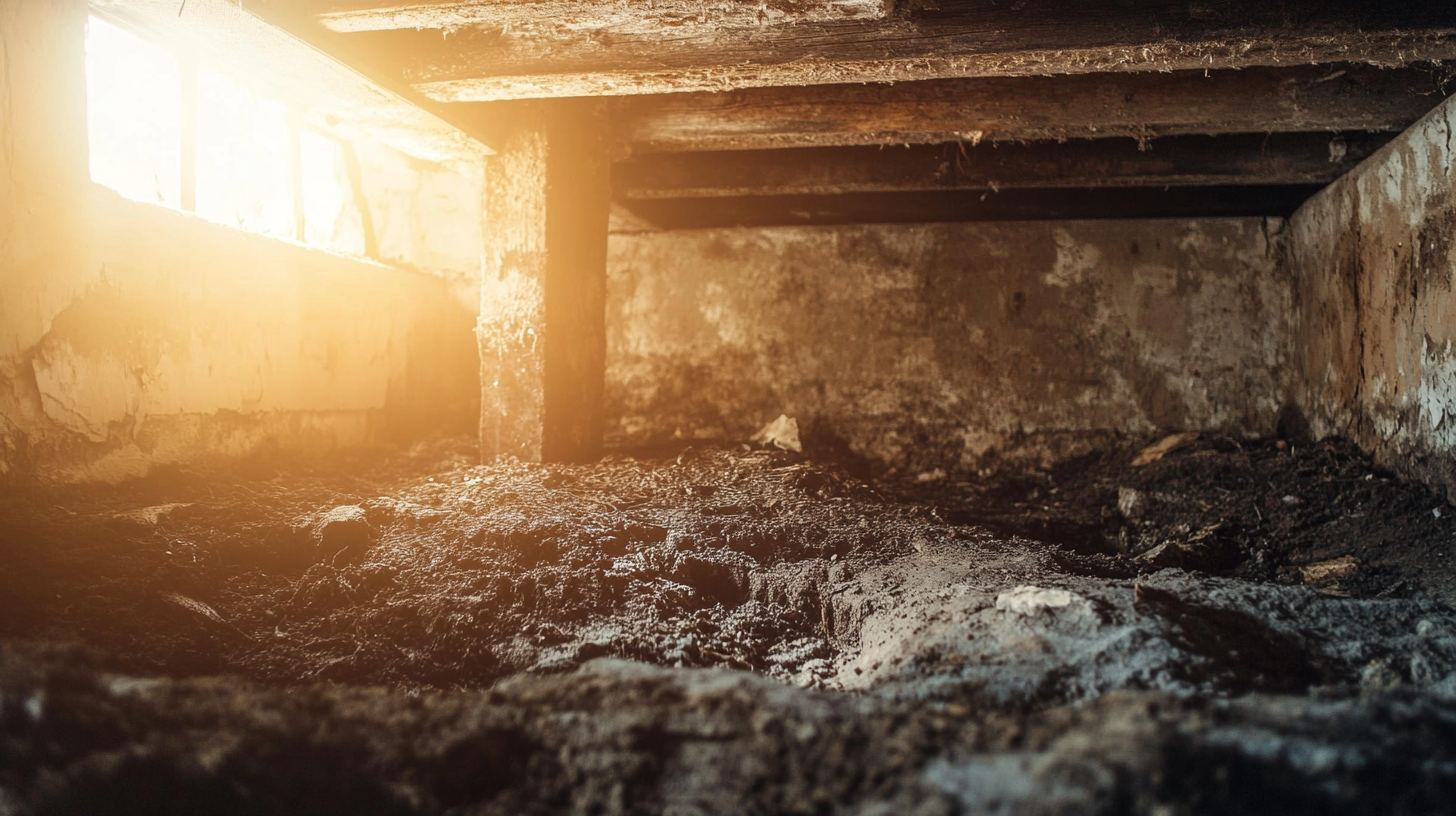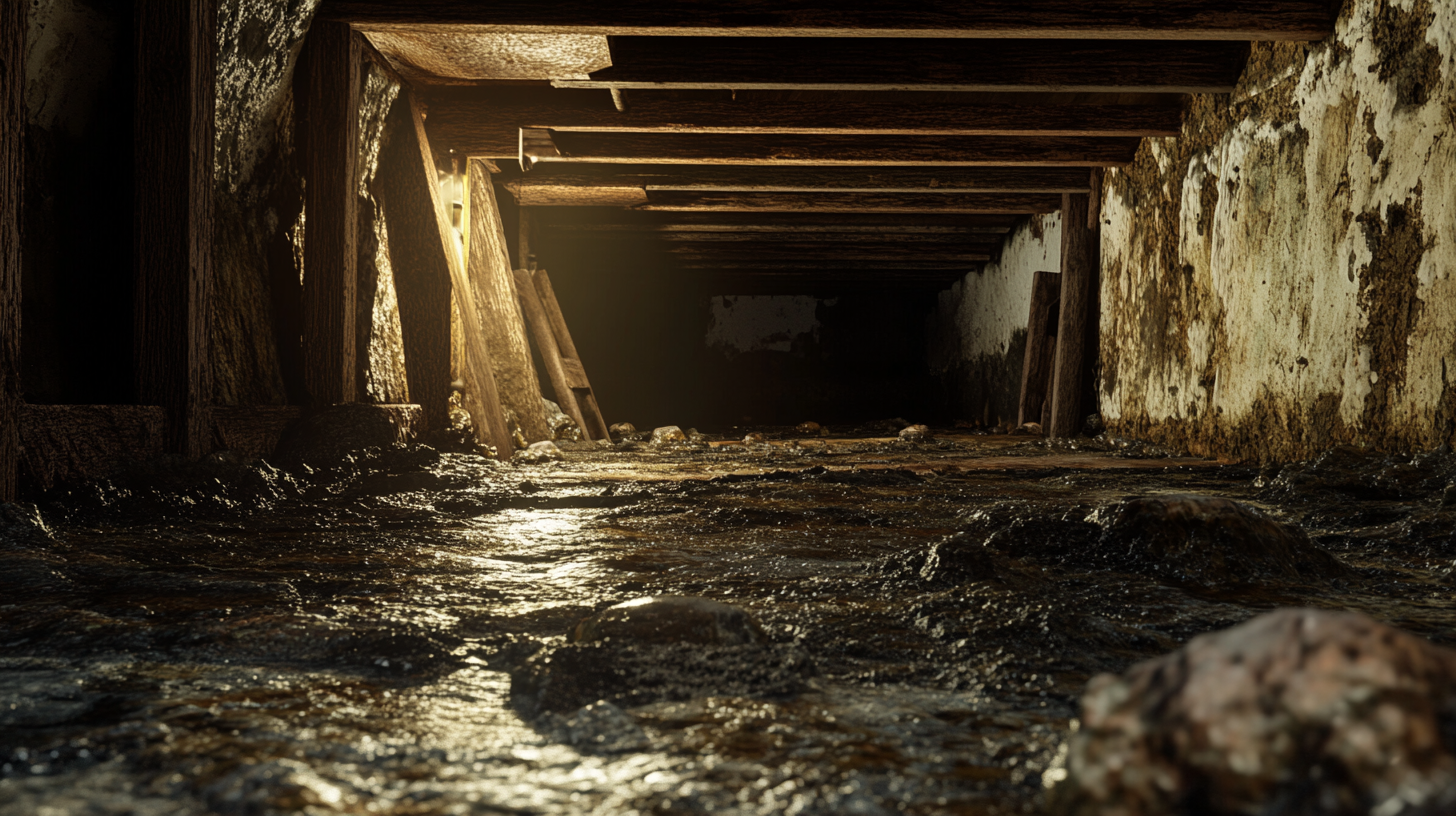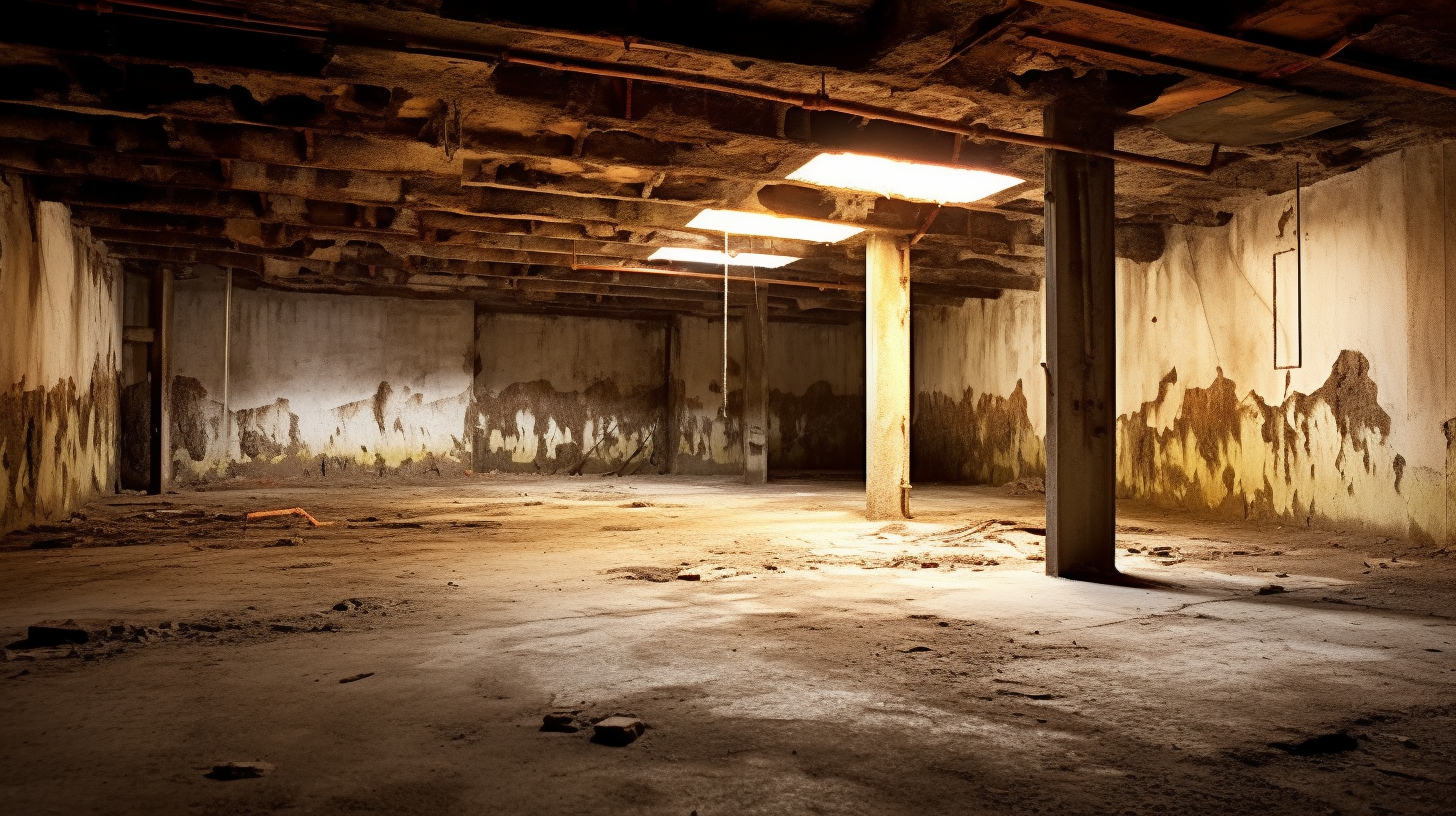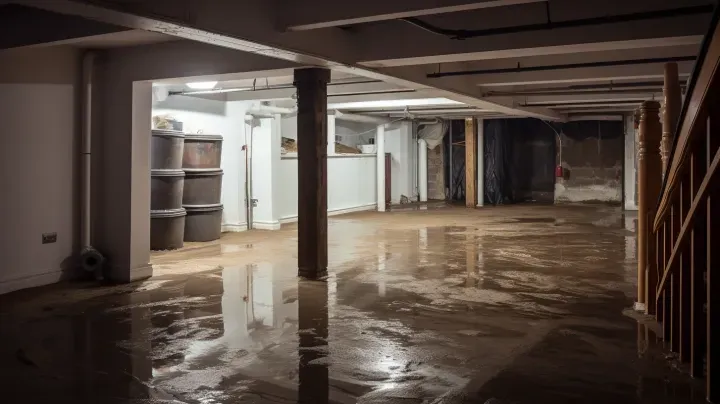Now IS THe Time To...

Crawl Space Services In Knoxville, TN
Stetson Howard: 865-432-6743
CRAWL SPACE ENCAPSULATION, REPAIR, WATERPROOFING & MOLD REMOVAL
No-Obligation, Free Inspections
No-Obligation Free Estimates
We Warranty All of Our Work
100% Satisfaction Guaranteed
Welcome to our comprehensive exploration of the essential practice of waterproofing basement walls. In the realm of home maintenance and improvement, few tasks are as crucial yet often overlooked as ensuring the waterproof integrity of your basement. This foundational aspect of building care serves not only to protect the structure of your home but also to enhance its overall livability and value.
The Benefits and Necessity of Basement Waterproofing
Waterproofing your basement walls is not just a preventative measure against potential issues; it's a proactive step towards safeguarding your home against a range of problems:
- Structural Integrity: Moisture is a known adversary of building materials. By waterproofing your basement walls, you protect the structural integrity of your home from water damage, which can lead to costly repairs and even structural failures.
- Health and Comfort: Damp basements are breeding grounds for mold and mildew, which can have significant health implications. Waterproofing helps maintain a dry and healthy living environment, free from allergens and irritants.
- Increased Usability and Value: A waterproofed basement is a usable space, free from the concerns of dampness and leaks. This not only adds to the functional square footage of your home but can also significantly increase its market value.
- Energy Efficiency: Waterproofing can also contribute to better insulation, reducing humidity and moisture infiltration, which in turn can lead to more efficient heating and cooling of your home.
In this article, we will delve into the various methods and materials used in basement waterproofing, the signs that indicate a need for waterproofing, and the long-term benefits of this vital home improvement task. Whether you're a new homeowner or looking to upgrade your current residence, understanding the importance of basement waterproofing is key to maintaining a safe, comfortable, and valuable home.
Understanding Basement Waterproofing
Basement waterproofing is a critical aspect of home maintenance, essential for protecting your property from the damaging effects of moisture and water ingress. This section will provide a comprehensive understanding of what basement waterproofing entails, its importance for home maintenance, and the common causes of basement moisture.
What is Basement Waterproofing?
Definition and Basic Principles:
Basement waterproofing refers to techniques and processes used to prevent water from entering the basement of a building. This involves creating a barrier on the walls and floor of the basement to block water and moisture. The basic principles include sealing cracks and gaps, applying waterproof coatings or membranes, and installing drainage systems to manage water away from the foundation.
Importance for Home Maintenance and Protection:
Waterproofing your basement is vital for several reasons:
- Structural Integrity: It prevents water from weakening the foundation and structure of your home.
- Health and Safety: By keeping the basement dry, it reduces the risk of mold and mildew, which can cause health issues.
- Property Value: A dry and well-maintained basement enhances the overall value of your property.
- Usability: Waterproofing transforms the basement into a usable space, free from dampness and leaks.
Common Causes of Basement Moisture
Identifying Sources of Moisture and Water Damage:
Understanding the sources of moisture is key to effective waterproofing:
- External Sources: These include rainwater, melting snow, and groundwater that can seep through cracks in the foundation.
- Internal Sources: Leaky pipes, condensation from appliances, and poor ventilation can also contribute to basement moisture.
How Moisture Affects Basement Walls and the Overall Structure:
Moisture can have detrimental effects on your basement and home:
- Wall Deterioration: Prolonged exposure to moisture can cause walls to crack, crumble, or bow.
- Mold Growth: Moisture creates an ideal environment for mold, which can spread to other parts of the home.
- Foundation Damage: Water seepage can weaken the foundation, leading to significant structural issues.
Assessing Your Basement's Waterproofing Needs
Properly assessing your basement's waterproofing needs is a crucial step in maintaining the health and integrity of your home. This section will guide you through identifying signs of water damage and conducting a moisture test, enabling you to determine whether waterproofing interventions are necessary.
Signs of Water Damage
Recognizing Signs of Existing Water Damage:
- Visible Water Stains: Look for water stains or discoloration on walls, floors, or ceilings, which indicate past or ongoing water intrusion.
- Mold and Mildew: The presence of mold or mildew, often accompanied by a musty odor, suggests high moisture levels.
- Peeling Paint or Wallpaper: Paint or wallpaper that is peeling, bubbling, or flaking is often a sign of moisture beneath the surface.
- Efflorescence: White, powdery residue on concrete walls indicates water evaporation and mineral deposits left behind.
Indicators that Waterproofing is Needed:
- Dampness or Wet Spots: Persistent dampness or wet spots on basement walls or floors are clear indicators that waterproofing is needed.
- Cracks in Walls or Floors: Any sizeable cracks can allow water to seep into the basement and should be addressed immediately.
- Pooling Water: Water accumulating in certain areas, especially after rainfall, is a sign of inadequate waterproofing.
Conducting a Moisture Test
Step-by-Step Guide to Performing a Moisture Test:
- Choose a Test Area: Select a spot on your basement wall that appears to be the most affected by moisture.
- Tape a Plastic Sheet: Cut a square foot of clear plastic sheeting and tape it securely to the wall, sealing all edges.
- Wait and Observe: Leave the plastic in place for at least 24 hours. After this period, check for condensation on the inside of the plastic.
- Check the Wall: Also, remove the plastic and check the wall for wetness.
Interpreting the Results:
- Condensation Inside the Plastic: This indicates high humidity levels in your basement, which could be due to poor ventilation or external moisture issues.
- Wetness on the Wall Side: If the wall under the plastic is wet, this suggests water seeping from the outside, indicating a need for exterior waterproofing.
- No Moisture: If there's no moisture on either side, your basement may not have significant waterproofing issues, but it's still wise to monitor regularly.
Options for Waterproofing Basement Walls
Ensuring your basement walls are properly waterproofed is crucial for the health and longevity of your home. There are several methods available, each with its own advantages, depending on the specific needs of your property. This section will explore various options for waterproofing basement walls, including interior and exterior methods, as well as combination approaches.
Interior Waterproofing Methods
Sealants and Waterproof Coatings:
Types and Application: Interior waterproofing often involves applying sealants or waterproof coatings directly to the basement walls. These can include epoxy or polyurethane-based products designed to create a moisture barrier.
Suitability: Ideal for basements with minor dampness issues or where external waterproofing is not feasible.
Interior Weeping Tile Systems:
Function: Interior weeping tile systems involve installing a drainage system inside the basement perimeter to collect and redirect water away from the foundation.
Installation: This method typically requires professional installation and may involve significant interior work, including breaking concrete near the walls to install the drainage system.
Exterior Waterproofing Solutions
Exterior Waterproofing Membranes:
Description: Exterior waterproofing usually involves applying a waterproof membrane or coating to the outside of the basement walls. This creates a barrier to prevent water from entering the walls.
Process: The process often requires excavation around the house to access the exterior walls, making it more labor-intensive and costly than interior methods.
Importance of Exterior Drainage Systems:
Role in Waterproofing: Proper exterior drainage is crucial in preventing water from accumulating around the foundation. This includes installing or improving gutters, downspouts, and grading the landscape to direct water away from the house.
Complementary to Membranes: Exterior drainage systems work in tandem with waterproofing membranes to provide comprehensive moisture protection.
Benefits of a Comprehensive Approach:
Enhanced Protection: A combination approach ensures that your basement is protected from all angles, significantly reducing the risk of water damage.
Long-Term Solution: While it may require a greater initial investment, a comprehensive approach to waterproofing offers a more permanent solution, potentially saving money on repairs and maintenance in the long run.
DIY Waterproofing vs. Professional Services
When it comes to waterproofing your home, understanding the differences between DIY methods and professional services is crucial for making an informed decision. This section will explore the pros and cons of DIY waterproofing techniques and the advantages of hiring professional services, helping you determine the best approach for your specific needs.
DIY Waterproofing Techniques
Simple DIY Solutions for Minor Moisture Issues:
- Applying Sealants and Coatings: For minor leaks or dampness, applying waterproof sealants or coatings to the affected area can be an effective solution.
- Installing Simple Drainage Solutions: This might include adding or improving gutters and downspouts to direct water away from the foundation.
Limitations and Risks of DIY Waterproofing:
- Complexity of Water Issues: DIY solutions are generally not suitable for complex or severe water intrusion problems.
- Risk of Inadequate Application: Incorrect application of waterproofing materials can lead to ineffective results and potentially exacerbate the problem.
- Lack of Long-Term Effectiveness: DIY methods may offer a temporary fix but often lack the durability and thoroughness of professional solutions.
Hiring a Professional
Advantages of Professional Waterproofing Services:
- Expertise and Experience: Professionals bring a depth of knowledge and experience, ensuring a comprehensive assessment and solution to your waterproofing needs.
- Access to Advanced Techniques and Materials: Professional services have access to high-quality materials and advanced techniques that are more effective and long-lasting.
- Warranty and Peace of Mind: Most professional waterproofing services come with a warranty, offering peace of mind and protection for your investment.
How to Choose the Right Contractor:
- Check Credentials and Experience: Look for a contractor with proper licensing, a proven track record, and significant experience in waterproofing.
- Read Reviews and Testimonials: Customer feedback can provide valuable insights into the quality and reliability of the contractor's services.
- Get Detailed Quotes: Ensure you receive a comprehensive quote that outlines the scope of work, materials to be used, and the total cost.
- Ask About Warranties: Inquire about the type of warranty offered and what it covers.
Preparing for Waterproofing
Proper preparation is key to the success of any waterproofing project, whether you're tackling it as a DIY endeavor or getting ready for professional services. This section will guide you through a comprehensive pre-waterproofing checklist, ensuring that your basement is ready for waterproofing, and will provide a detailed list of necessary tools and materials for those planning to undertake DIY waterproofing.
Pre-Waterproofing Checklist
Steps to Prepare Your Basement for Waterproofing:
- Clear the Area: Remove all items from the basement to provide easy access to walls and floors. This includes furniture, appliances, and stored items.
- Inspect for Damage: Look for any signs of existing damage, such as cracks, mold, or damp spots. These areas may need special attention during the waterproofing process.
- Clean the Surfaces: Ensure that all surfaces are clean and free of debris, dust, and loose paint. This helps in the effective application of waterproofing materials.
- Repair Cracks and Holes: Fill in any cracks or holes in the walls or floors to prevent water from seeping through.
- Ensure Proper Ventilation: Good ventilation is crucial, especially if you're using products with strong fumes. Set up fans and keep windows open if possible.
Ensuring Safety and Efficiency:
- Safety Gear: Always wear appropriate safety gear, including gloves, goggles, and a mask, particularly when handling chemical products.
- Check for Electrical and Plumbing Lines: Be aware of any electrical wiring or plumbing that may be affected during the waterproofing process.
Necessary Tools and Materials
List of Tools and Materials for DIY Projects:
For a typical DIY waterproofing project, you will need:
- Waterproofing sealant or coating (like epoxy or polyurethane)
- Caulking gun (for sealants)
- Brushes or rollers for application
- Protective gear (gloves, goggles, mask)
- Patching compound (for repairing cracks)
- Cleaning supplies (for surface preparation)
- Dehumidifier (to keep the area dry)
Recommendations for Quality Products:
- Choose High-Quality Sealants: Opt for reputable brands known for their durability and effectiveness in waterproofing.
- Select the Right Type of Coating: Depending on your basement’s condition, choose between water-based or solvent-based coatings, each with its own set of advantages.
- Read Product Reviews: Before purchasing, read reviews and seek recommendations to ensure you're getting the best product for your needs.
As we conclude our exploration of basement waterproofing, it's crucial to underscore the significance of this essential home maintenance task. Waterproofing your basement walls is not just a measure to counteract existing water issues; it's a proactive strategy to safeguard your home against a myriad of potential problems. Proper waterproofing protects the structural integrity of your home, prevents health hazards like mold and mildew, and enhances the overall comfort and value of your living space.
Water intrusion in basements can lead to costly repairs, structural damage, and can even compromise the safety of your home. By effectively waterproofing your basement walls, you are taking a critical step in preserving the longevity of your property and ensuring a healthy environment for you and your family.
Encouragement for Proactive Maintenance and Care
The journey towards a dry and secure basement doesn't end with the completion of a waterproofing project. Ongoing maintenance and care are key to sustaining the effectiveness of your waterproofing efforts. Regularly inspect your basement for any signs of moisture, such as damp spots, peeling paint, or a musty smell. Address any issues promptly to prevent them from escalating.
Stay vigilant, especially after heavy rains or in seasons with high humidity, as these conditions can test the resilience of your waterproofing solutions. Remember, proactive maintenance not only extends the life of your waterproofing but also helps in early detection of potential problems, saving you time and money in the long run.
In conclusion, we encourage homeowners to view basement waterproofing as an indispensable part of home upkeep. By prioritizing this crucial task and staying committed to regular maintenance, you ensure the continued protection and preservation of your home, making it a safe and comfortable place for years to come.
FAQs
Recent Blog Posts
Crawl Space News







